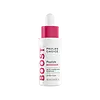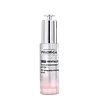What's inside
What's inside
 Key Ingredients
Key Ingredients

 Benefits
Benefits

 Concerns
Concerns

 Ingredients Side-by-side
Ingredients Side-by-side

Water
Skin ConditioningGlycerin
HumectantPEG-8 Dimethicone
EmulsifyingTripeptide-1
Skin ConditioningPalmitoyl Tripeptide-1
Skin ConditioningPalmitoyl Tetrapeptide-7
Skin ConditioningPalmitoyl Hexapeptide-12
Skin ConditioningMyristoyl Hexapeptide-16
Skin ConditioningMyristoyl Pentapeptide-17
Skin ConditioningHexanoyl Dipeptide-3 Norleucine Acetate
Skin ConditioningAzelaoyl Bis-Dipeptide-10
Skin ConditioningGlycoproteins
Skin ConditioningPhospholipids
Skin ConditioningAdenosine
Skin ConditioningDipotassium Glycyrrhizate
HumectantArginine
MaskingValine
MaskingGlycine
BufferingAlanine
MaskingGlutamic Acid
HumectantSerine
MaskingThreonine
Yeast Extract
Skin ConditioningIsoleucine
Skin ConditioningProline
Skin ConditioningHistidine
HumectantPhenylalanine
MaskingPCA
HumectantPhytic Acid
Panax Ginseng Root Extract
EmollientSodium PCA
HumectantPsidium Guajava Fruit Extract
AstringentEuterpe Oleracea Fruit Extract
Ahnfeltiopsis Concinna Extract
Skin ConditioningDextran
Hydrolyzed Silk
HumectantLecithin
EmollientGlyceryl Polymethacrylate
C12-16 Pareth-9
EmulsifyingTrideceth-12
EmulsifyingSodium Lactate
BufferingCarbomer
Emulsion StabilisingAspartic Acid
MaskingPolysorbate 20
EmulsifyingButylene Glycol
HumectantCaprylyl Glycol
EmollientPEG-8
HumectantC11-15 Pareth-7
EmulsifyingGuar Hydroxypropyltrimonium Chloride
Skin ConditioningPhytosteryl/Octyldodecyl Lauroyl Glutamate
Skin ConditioningEctoin
Skin ConditioningCitrate Buffer
Trimethylsiloxyamodimethicone
Phenoxyethanol
PreservativeSodium Hydroxide
BufferingEthylhexylglycerin
Skin ConditioningWater, Glycerin, PEG-8 Dimethicone, Tripeptide-1, Palmitoyl Tripeptide-1, Palmitoyl Tetrapeptide-7, Palmitoyl Hexapeptide-12, Myristoyl Hexapeptide-16, Myristoyl Pentapeptide-17, Hexanoyl Dipeptide-3 Norleucine Acetate, Azelaoyl Bis-Dipeptide-10, Glycoproteins, Phospholipids, Adenosine, Dipotassium Glycyrrhizate, Arginine, Valine, Glycine, Alanine, Glutamic Acid, Serine, Threonine, Yeast Extract, Isoleucine, Proline, Histidine, Phenylalanine, PCA, Phytic Acid, Panax Ginseng Root Extract, Sodium PCA, Psidium Guajava Fruit Extract, Euterpe Oleracea Fruit Extract, Ahnfeltiopsis Concinna Extract, Dextran, Hydrolyzed Silk, Lecithin, Glyceryl Polymethacrylate, C12-16 Pareth-9, Trideceth-12, Sodium Lactate, Carbomer, Aspartic Acid, Polysorbate 20, Butylene Glycol, Caprylyl Glycol, PEG-8, C11-15 Pareth-7, Guar Hydroxypropyltrimonium Chloride, Phytosteryl/Octyldodecyl Lauroyl Glutamate, Ectoin, Citrate Buffer, Trimethylsiloxyamodimethicone, Phenoxyethanol, Sodium Hydroxide, Ethylhexylglycerin
Water
Skin ConditioningPropanediol
SolventGlycerin
HumectantPEG-40 Hydrogenated Castor Oil
EmulsifyingTriethyl Citrate
Masking1,2-Hexanediol
Skin ConditioningSodium Citrate
BufferingNiacinamide
SmoothingCitric Acid
BufferingSodium Benzoate
MaskingParfum
MaskingTaurine
BufferingPolyglyceryl-10 Dioleate
EmulsifyingCarnosine
Skin ConditioningSodium PCA
HumectantMannitol
HumectantSodium Hyaluronate
HumectantTocopheryl Acetate
AntioxidantPentylene Glycol
Skin ConditioningArginine
MaskingCaprylic/Capric Triglyceride
MaskingBenzotriazolyl Dodecyl P-Cresol
UV AbsorberXanthan Gum
EmulsifyingHydrolyzed Hyaluronic Acid
HumectantAdenosine
Skin ConditioningPolyglyceryl-10 Dipalmitate
EmollientSilybum Marianum Extract
Skin ConditioningGlyceryl Caprylate
EmollientDipeptide Diaminobutyroyl Benzylamide Diacetate
Skin ConditioningTocopherol
AntioxidantBenzoic Acid
MaskingGlycine
BufferingPseudoalteromonas Ferment Extract
HumectantMagnesium Sulfate
Nicotinamide Adenine Dinucleotide
Skin ConditioningErgothioneine
AntioxidantCI 17200
Cosmetic ColorantWater, Propanediol, Glycerin, PEG-40 Hydrogenated Castor Oil, Triethyl Citrate, 1,2-Hexanediol, Sodium Citrate, Niacinamide, Citric Acid, Sodium Benzoate, Parfum, Taurine, Polyglyceryl-10 Dioleate, Carnosine, Sodium PCA, Mannitol, Sodium Hyaluronate, Tocopheryl Acetate, Pentylene Glycol, Arginine, Caprylic/Capric Triglyceride, Benzotriazolyl Dodecyl P-Cresol, Xanthan Gum, Hydrolyzed Hyaluronic Acid, Adenosine, Polyglyceryl-10 Dipalmitate, Silybum Marianum Extract, Glyceryl Caprylate, Dipeptide Diaminobutyroyl Benzylamide Diacetate, Tocopherol, Benzoic Acid, Glycine, Pseudoalteromonas Ferment Extract, Magnesium Sulfate, Nicotinamide Adenine Dinucleotide, Ergothioneine, CI 17200
Ingredients Explained
These ingredients are found in both products.
Ingredients higher up in an ingredient list are typically present in a larger amount.
Adenosine is in every living organism. It is one of four components in nucleic acids that helps store our DNA.
Adenosine has many benefits when used. These benefits include hydrating the skin, smoothing skin, and reducing wrinkles. Once applied, adenosine increases collagen production. It also helps with improving firmness and tissue repair.
Studies have found adenosine may also help with wound healing.
In skincare products, Adenosine is usually derived from yeast.
Learn more about AdenosineArginine is an amino acid that is important for human development. Your body uses is it to produce hair keratin and skin collagen.
As a cosmetic ingredient, Arginine has antioxidant properties and can also help repair damaged skin. This ingredient is derived either synthetically or from animals.
Arginine isn't fungal acne safe when used in the presence of other lipids (fats, fatty acids, oils, esters, etc). Oils and fats occur naturally within the skin, so take caution when using Arginine if you're prone to fungal acne.
Learn more about ArginineGlycerin is already naturally found in your skin. It helps moisturize and protect your skin.
A study from 2016 found glycerin to be more effective as a humectant than AHAs and hyaluronic acid.
As a humectant, it helps the skin stay hydrated by pulling moisture to your skin. The low molecular weight of glycerin allows it to pull moisture into the deeper layers of your skin.
Hydrated skin improves your skin barrier; Your skin barrier helps protect against irritants and bacteria.
Glycerin has also been found to have antimicrobial and antiviral properties. Due to these properties, glycerin is often used in wound and burn treatments.
In cosmetics, glycerin is usually derived from plants such as soybean or palm. However, it can also be sourced from animals, such as tallow or animal fat.
This ingredient is organic, colorless, odorless, and non-toxic.
Glycerin is the name for this ingredient in American English. British English uses Glycerol/Glycerine.
Learn more about GlycerinThis ingredient is an amino acid that helps build proteins and moisturizes skin. It is already present in our skin as our bodies produce them naturally.
Glycine already plays a role in helping keep our skin moisturized as amino acids transport moisture throughout our skin.
As collagen is made up of glycine and other amino acids, it is believed glycine may help our skin produce more collagen.
Learn more about GlycineSodium PCA is the sodium salt of pyroglutamic acid. It is naturally occurring in our skin's natural moisturizing factors where it works to maintain hydration.
The PCA stands for pyrrolidone carboxylic acid, a natural amino acid derivative.
This ingredient has skin conditioning, anti-inflammatory, and humectant properties. Humectants help hydrate your skin by drawing moisture from the air. This helps keep your skin moisturized.
Learn more about Sodium PCAWater. It's the most common cosmetic ingredient of all. You'll usually see it at the top of ingredient lists, meaning that it makes up the largest part of the product.
So why is it so popular? Water most often acts as a solvent - this means that it helps dissolve other ingredients into the formulation.
You'll also recognize water as that liquid we all need to stay alive. If you see this, drink a glass of water. Stay hydrated!
Learn more about Water